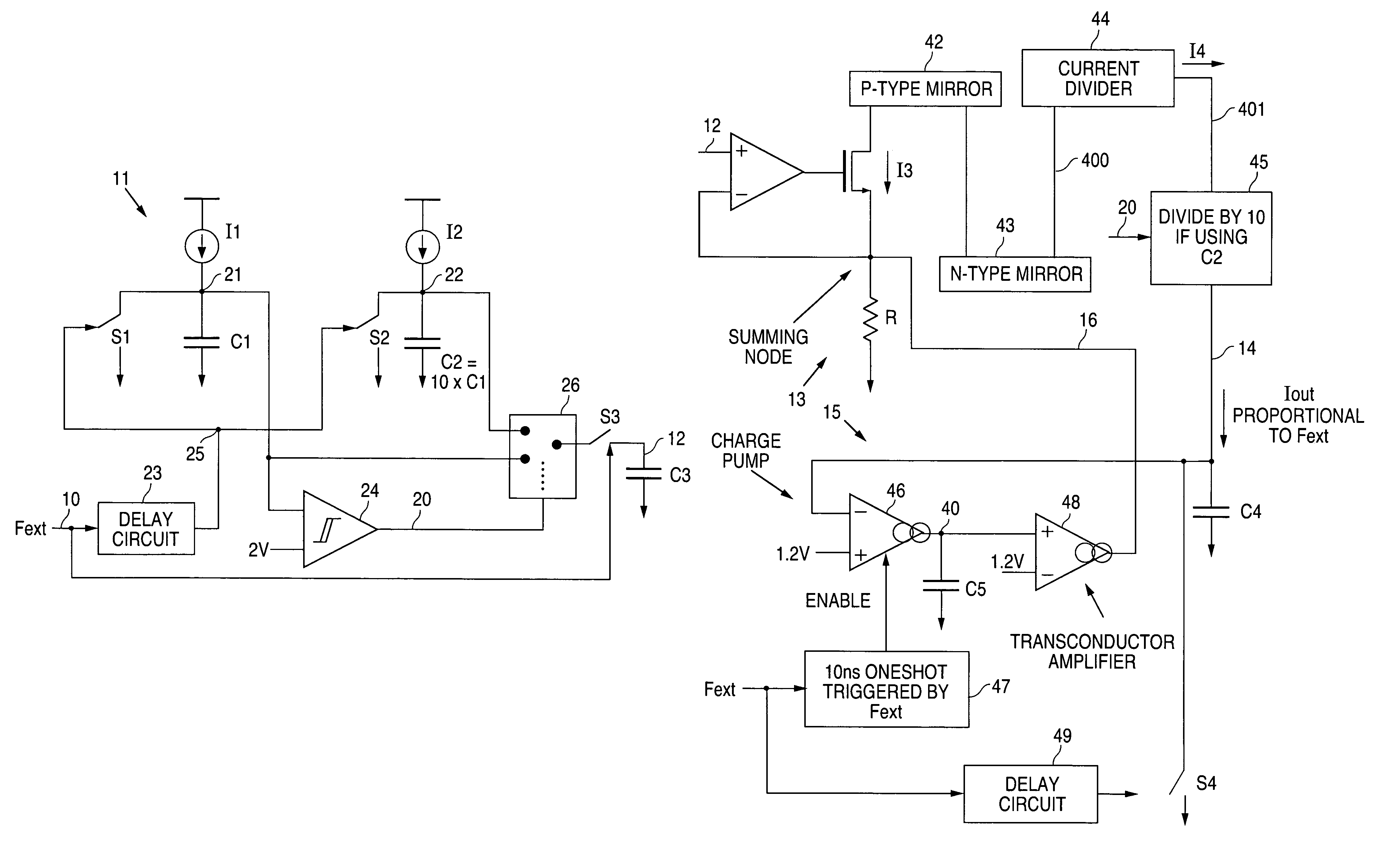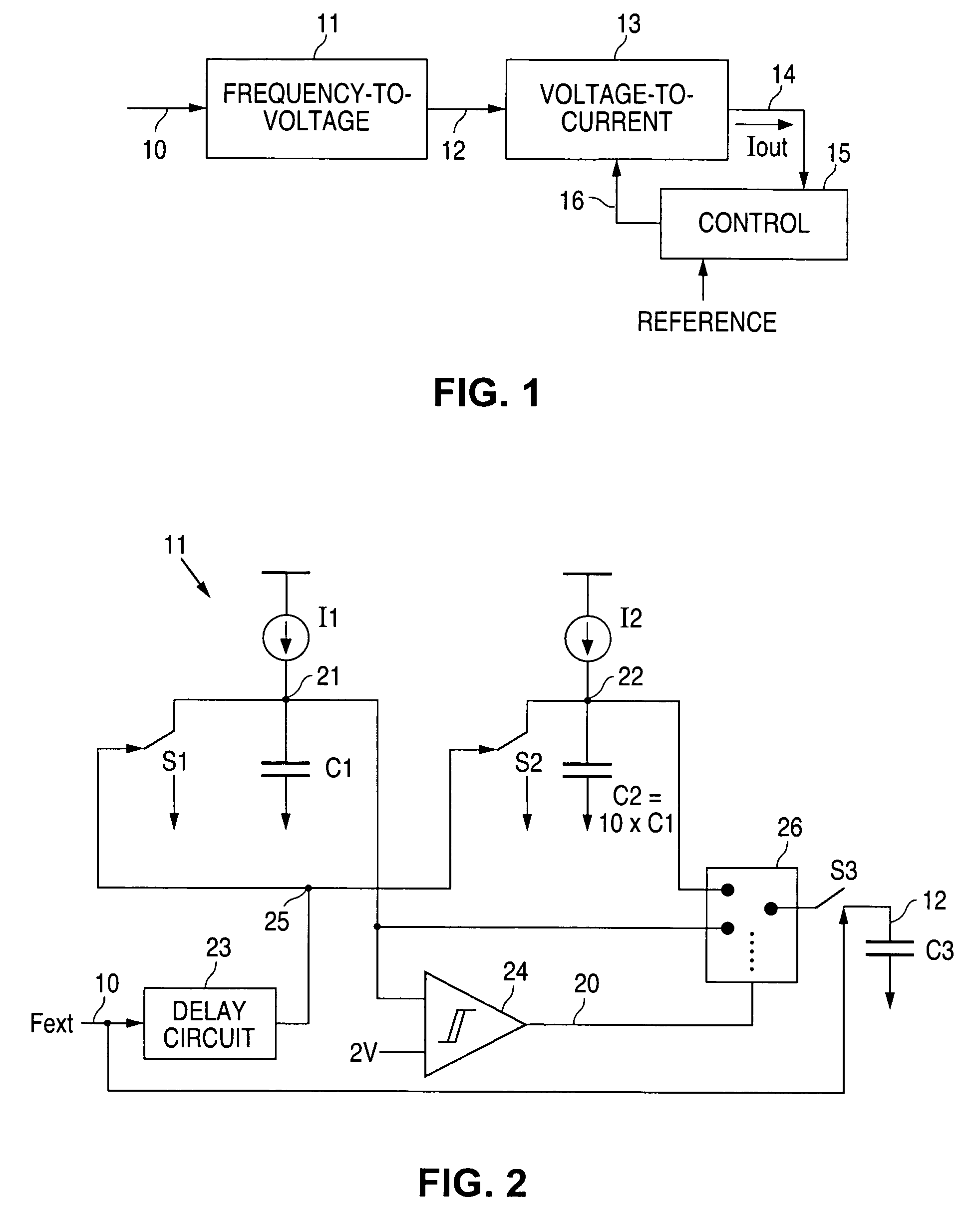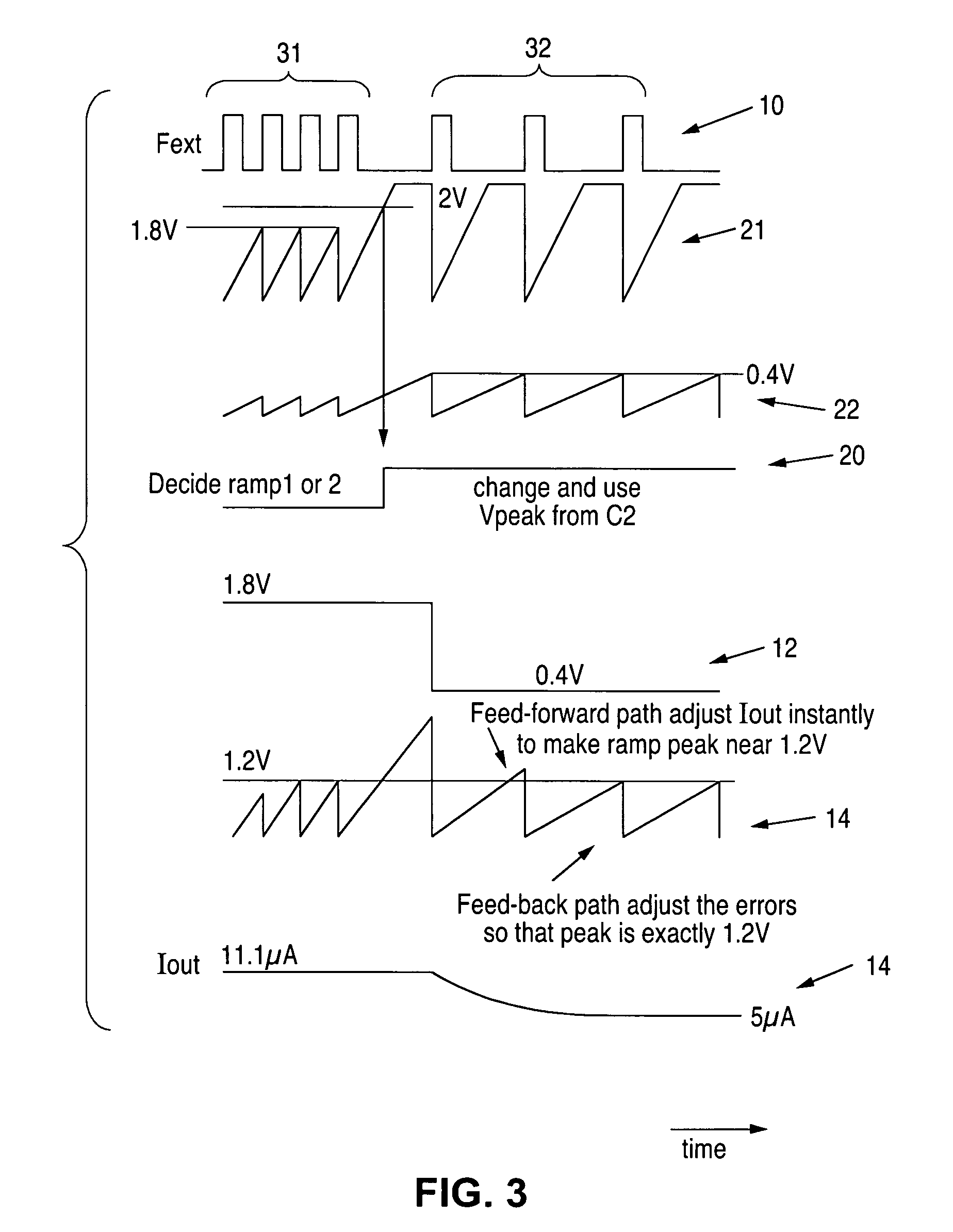Producing a frequency-representative signal with rapid adjustment to frequency changes
- Summary
- Abstract
- Description
- Claims
- Application Information
AI Technical Summary
Problems solved by technology
Method used
Image
Examples
Embodiment Construction
[0012]FIGS. 1 through 5, discussed herein, and the various embodiments used to describe the principles of the present invention in this patent document are by way of illustration only and should not be construed in any way to limit the scope of the invention. Those skilled in the art will understand that the principles of the present invention may be implemented in any suitably arranged system.
[0013]FIG. 1 diagrammatically illustrates a frequency-to-current conversion apparatus according to exemplary embodiments of the invention. The apparatus of FIG. 1 includes a frequency-to-voltage converter 11 which produces at 12 an output voltage that represents the frequency of an input signal received at 10. In response to the voltage at 12, a voltage-to-current converter 13 produces at 14 an output current Iout that represents the frequency of the input signal received at 10. A feed-back control path (or loop) at 15 provides feed-back control signaling between the output 14 of the voltage-t...
PUM
 Login to View More
Login to View More Abstract
Description
Claims
Application Information
 Login to View More
Login to View More - R&D
- Intellectual Property
- Life Sciences
- Materials
- Tech Scout
- Unparalleled Data Quality
- Higher Quality Content
- 60% Fewer Hallucinations
Browse by: Latest US Patents, China's latest patents, Technical Efficacy Thesaurus, Application Domain, Technology Topic, Popular Technical Reports.
© 2025 PatSnap. All rights reserved.Legal|Privacy policy|Modern Slavery Act Transparency Statement|Sitemap|About US| Contact US: help@patsnap.com



